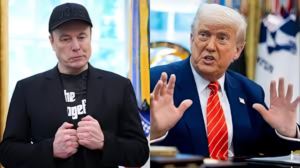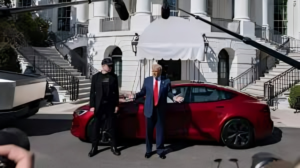Navigating the Storm: Trump’s Tesla Subsidy Threat and Musk’s Bold Response
Introduction
In a recent twist in the ongoing dialogue between politics and clean energy, former President Donald Trump threatened to slash federal subsidies for electric vehicles—a move that directly targets Tesla, the marquee company steering the auto industry’s electric revolution. Tesla CEO Elon Musk fired back on social media, daring Trump to “cut it all.” This confrontation brings into focus the broader debate over government support for renewable innovation, the role of subsidies in market growth, and the high-stakes interplay of personalities shaping our energy future.

The Context: Why Subsidies Matter
Electric vehicle (EV) subsidies have been central to accelerating adoption in the United States. By providing financial incentives, the government lowers the upfront cost barrier for consumers, spurring demand and encouraging automakers to invest in EV technology.
Key Benefits of EV Subsidies
- Consumer Affordability
- Reduces purchase price by up to $7,500 per vehicle.
- Widens market access, especially for middle-income buyers.
- Industry Growth
- Signals government commitment, attracting investment.
- Helps start‑ups and incumbents scale production.
- Environmental Impact
- Cuts greenhouse gas emissions by promoting zero‑tailpipe vehicles.
- Aligns with climate goals at federal and state levels.
The Political Flashpoint
Trump’s Announcement
Late last week, in a statement on his social media platform, Trump argued that EV subsidies unfairly benefit wealthy consumers and powerful tech billionaires. He suggested:
- Eliminating subsidies for high‑end EV makers such as Tesla.
- Redirecting funds toward traditional energy projects.
- Promoting “American energy dominance” through oil and gas extraction.
This stance resonates with critics who view clean‑energy incentives as government overreach, yet it alarms industry leaders who see subsidies as critical to U.S. competitiveness.
Musk’s Challenge
Elon Musk, never one to shy away from a public spat, responded within hours:
“If subsidies are bad, then cut them all. Let’s see whose company wins on true market merit.”
With this tweet, Musk reframed the debate as a test of Tesla’s innovation edge versus legacy automakers. His bold call:
- Highlights confidence in Tesla’s cost structure.
- Gains public attention, leveraging Musk’s massive following.
- Pressures opponents to defend their own subsidy receipts.
Real‑World Implications
Impact on Consumers
- Price Uncertainty: Potential rollback could raise EV prices by thousands of dollars overnight.
- Market Hesitation: Buyers may delay decisions, awaiting clarity on incentives.
- Geographical Divide: States with their own subsidies (California, New York) may maintain local incentives, creating a patchwork of support.
Effect on Automakers
- Tesla
- Currently benefits heavily but has scaled to reduce per‑unit costs.
- A full cut tests Tesla’s ability to compete purely on cost and technology.
- Legacy Brands (GM, Ford, etc.)
- Often rely on federal incentives to launch less‑profitable EV lines.
- May face production slowdowns or cancel project plans if demand dips.
Beyond the Headlines: A Deeper Look
Historical Examples of Subsidy Removal
- U.S. Corn Ethanol Subsidy (2011): Phased cut led to market adjustments but maintained growth through state support and private R&D.
- Solar Investment Tax Credit Caps (2020): Gradual step‑down allowed solar industry to innovate and reduce costs, sustaining installation rates.
These cases demonstrate that while abrupt subsidy cuts can jolt markets, industries often adapt through technology improvements and diversified funding.
Balancing Act: Government and Markets
- Innovation Cycle: Initial subsidies can kick‑start nascent technologies until they achieve economies of scale.
- Sunset Clauses: Time‑limited incentives with clear phase‑out schedules reassure investors and consumers.
- Performance Metrics: Tying incentives to environmental or domestic‑production criteria ensures targeted outcomes.

What’s Next for Tesla and the Industry?
- Policy Arsenal
- Tesla and allies may lobby Congress to protect or reform EV incentives.
- Possible introduction of tiered subsidies based on price caps or battery sourcing.
- Corporate Strategy
- Tesla could accelerate cost reductions through vertical integration (battery Gigafactories).
- Legacy automakers might seek state‑level incentives or partnerships with EV start‑ups.
- Consumer Advocacy
- Grassroots campaigns: “Keep EV Incentives” initiatives on social media.
- Educational drives highlighting long‑term savings (fuel, maintenance).

Conclusion
The clash between Donald Trump’s threat to eliminate Tesla subsidies and Elon Musk’s defiant retort underscores a pivotal moment for the EV sector. While subsidies have undeniably fueled early growth, the real test lies in an industry’s ability to stand on its own merits. Whether through refined policy frameworks or relentless technological innovation, the outcome will shape not only the future of transportation but also America’s role in the global clean‑energy race.